INNOVATION EXPO
Pupils on the engineering track build a solar-powered train to bypass cable theft, power cuts
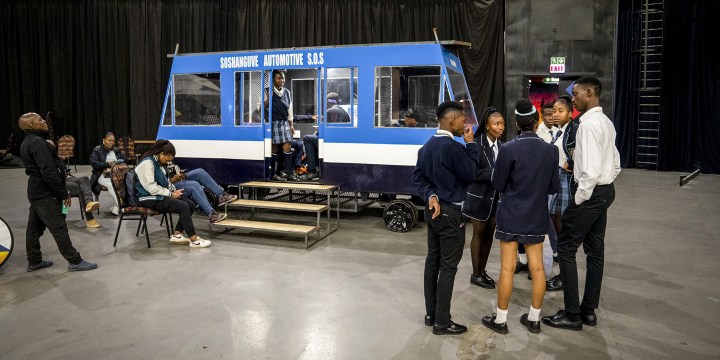
Students at Soshanguve Technical High School have been honing their engineering skills on a train that runs on solar power.
Soshanguve, north of Pretoria, is a township plagued by unemployment, drug abuse and crime. Courier services are afraid to do deliveries in the area and paramedics often work under police escort to prevent being robbed or attacked. Earlier this year, reports alleged that children as young as 12 were being recruited by gangs, who were training them to use firearms to rob people.
Despite their impoverished backgrounds and social challenges, a group of learners from Soshanguve Technical High School are determined to make a success of their lives.
In a country in the midst of an energy supply crisis and dealing with rising fuel costs, the learners decided to build a solar-powered train.
The group of learners gathered proudly around their invention on its tracks behind the school when Daily Maverick visited. Many of the learners cannot afford the bare necessities, and some have no access to the internet at home and others don’t own a cellphone. One learner’s grey school pants were torn, with different coloured threads criss-crossing the tear.
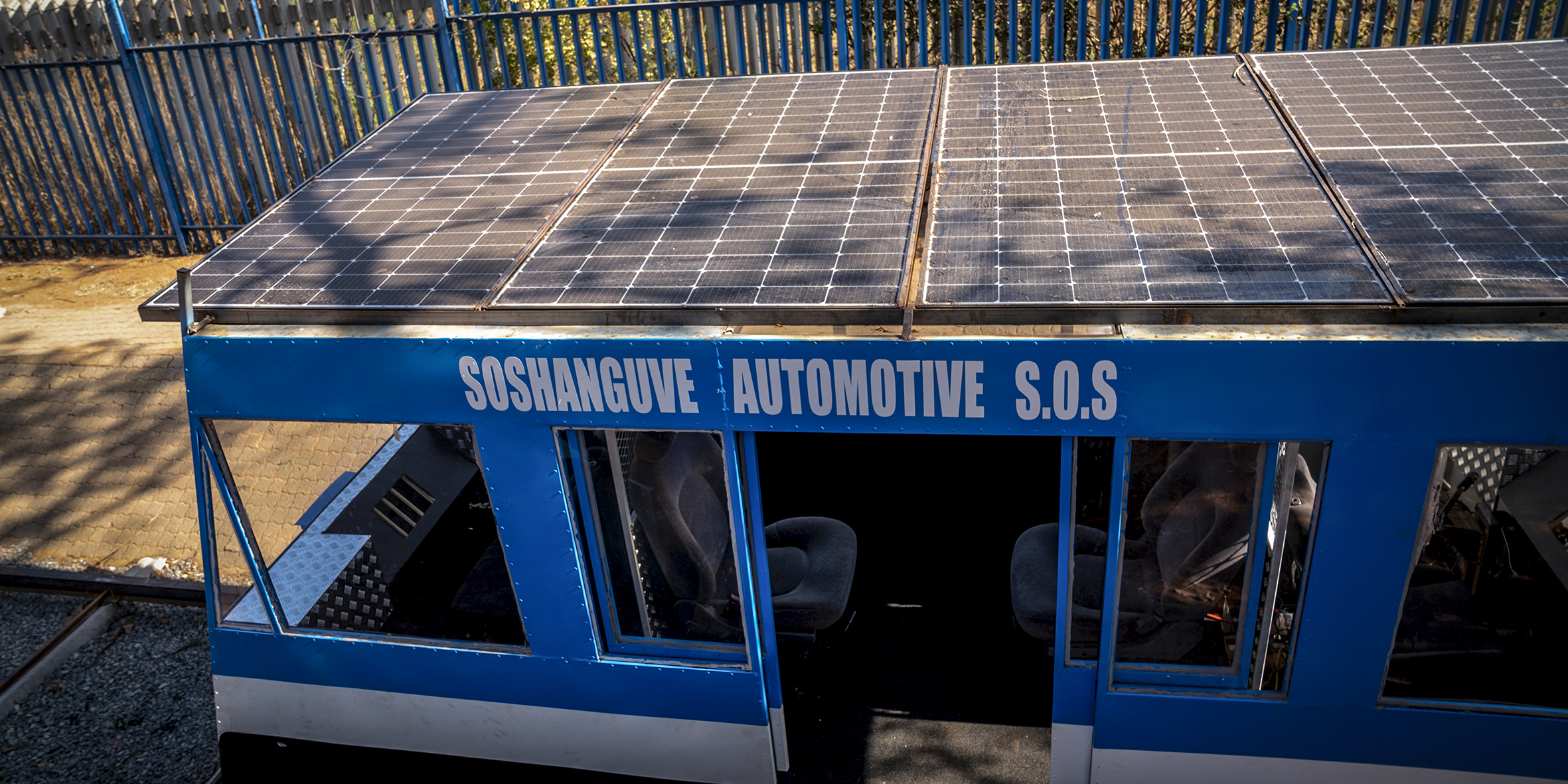
Four Monocrystalline Silicon Solar panels attached to the roof of the train provides a total of 1,560W of power. (Photo: Shiraaz Mohamed)
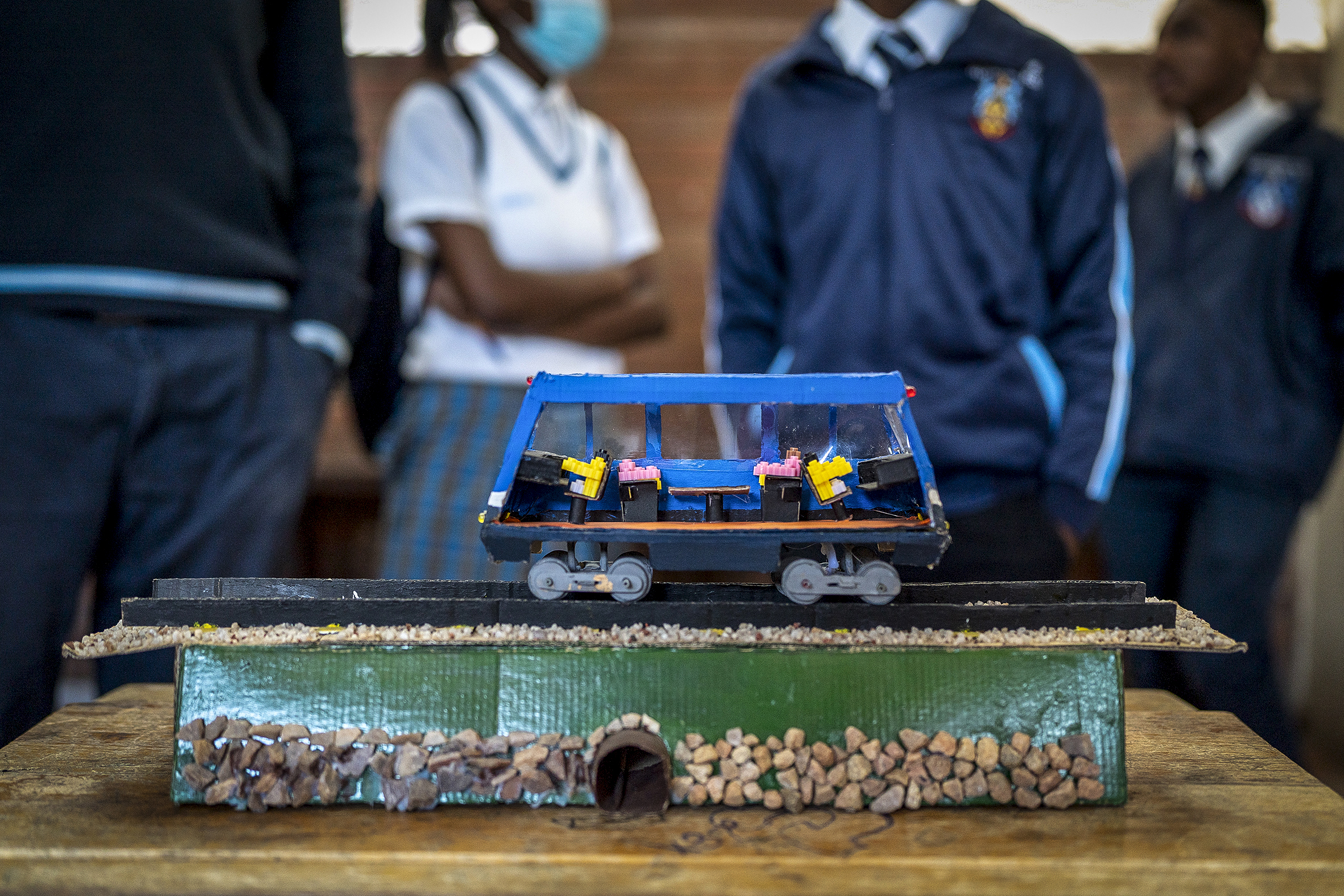
A solar train model was made using recycled materials to give the learners a clear vision of what the end result should look like. (Photo: Shiraaz Mohamed)
The train, named Modjadji after the Limpopo Rain Queen, runs off a 10kw motor and is capable of speeds of up to 30km/h. There are four solar panels attached to its roof, and the energy generated is stored in lithium batteries.
The train has mirrors, wipers, carpets and power sockets. It offers two passenger seats and two driver compartments as well as a TV screen used to show the building process from start to finish.
The train cost about R500,000 to build, said acting principal Amos Tladi. “We had to import the motor from China … and the solar converters cost plus-minus R100,000. The lithium batteries cost R25,000 each; there are four.”
Learner Ronnie Masindi said they had chosen to build the solar train after identifying problems faced by South Africa. “As a team [of 19 learners], we all agreed that the major problem is that people locally are no longer using electrical trains as a result of cable theft and load shedding.
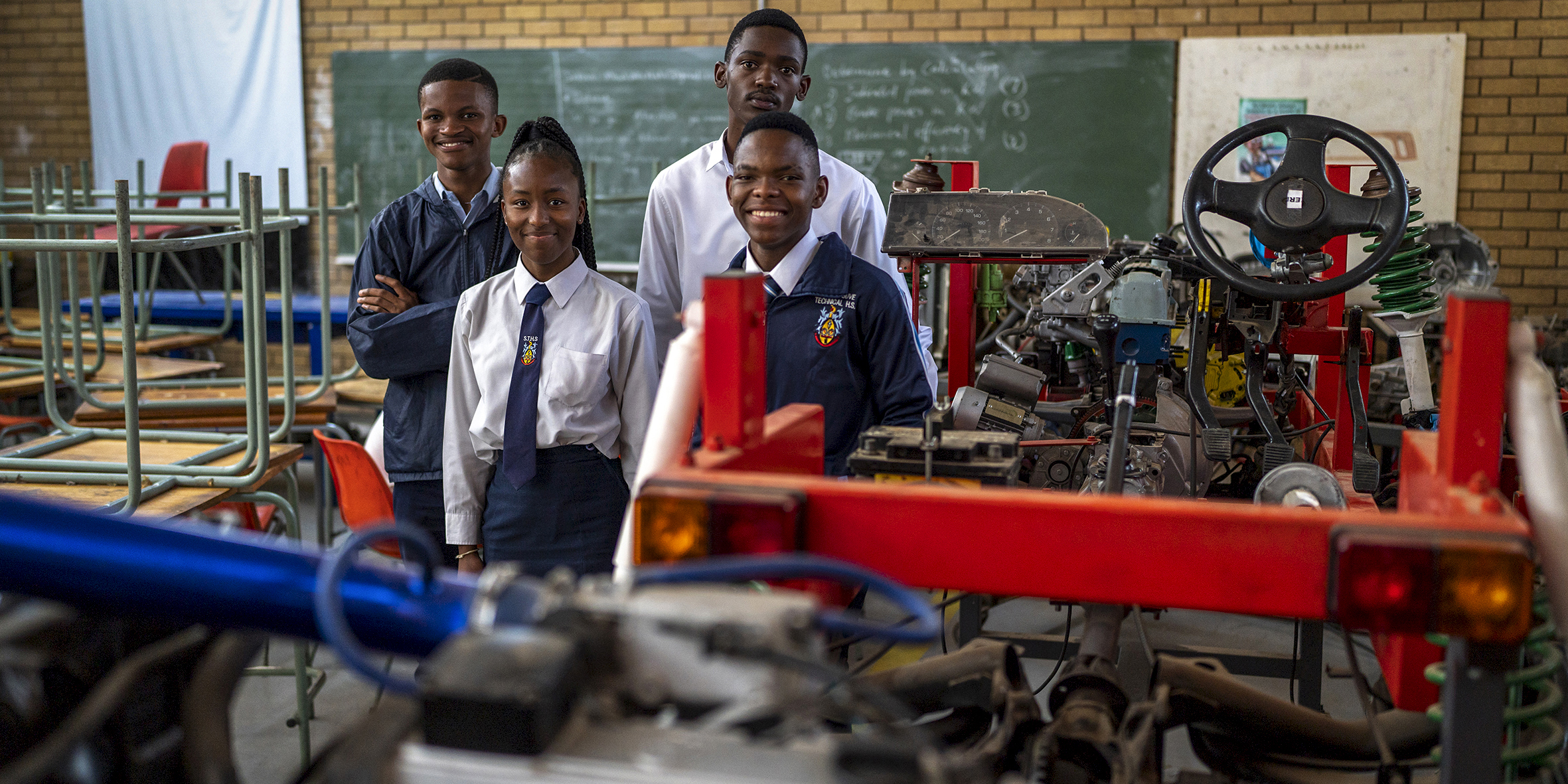
Amogelang Mampane, Loyiso Matsumbo, Roseane Hlongwane and Rian Hlongwane pose for a photograph in the automotive workshop. (Photo: Shiraaz Mohamed)
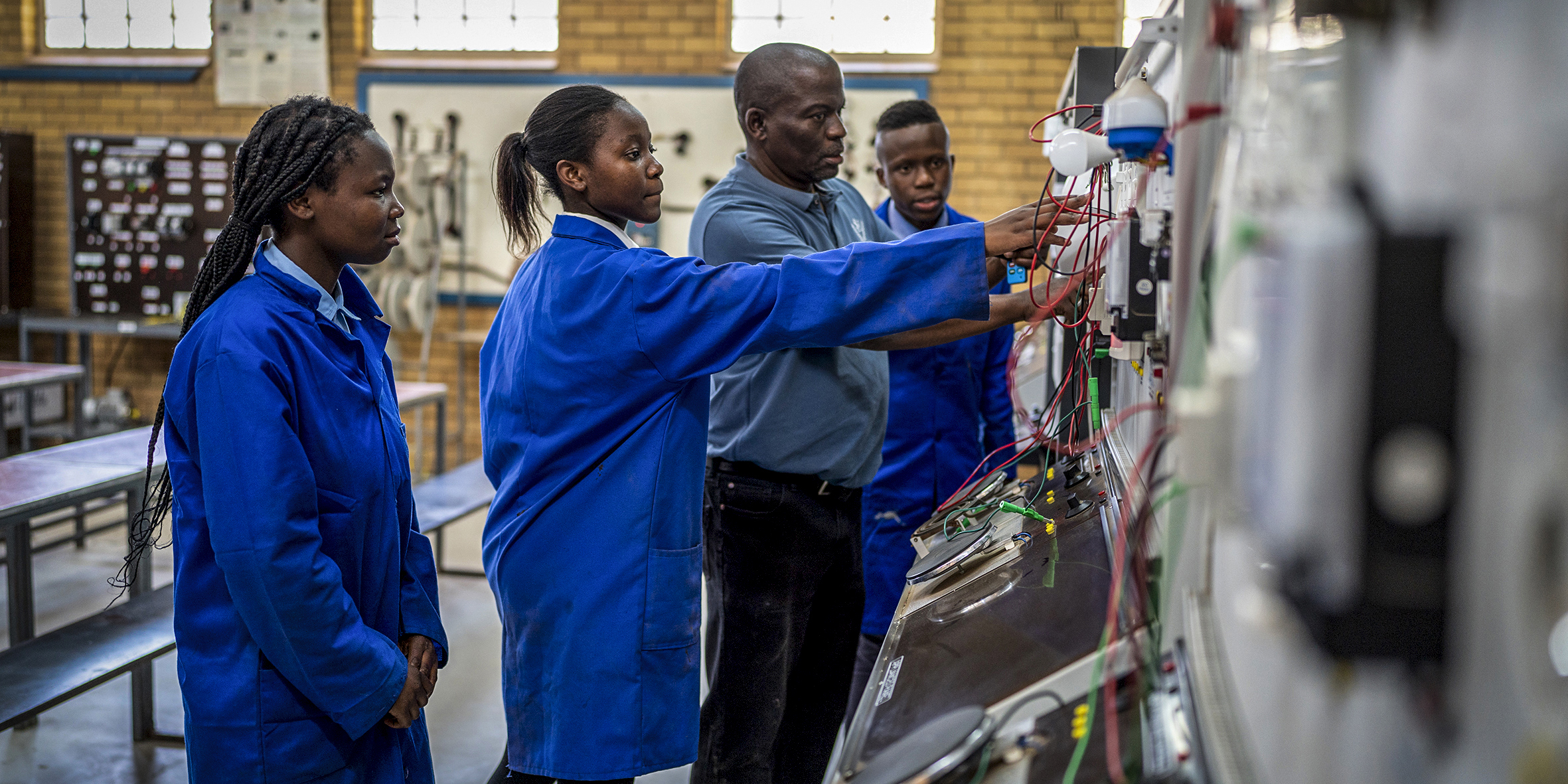
From right: Jacob Mokhethwa, electrical teacher Mr Andrew Legwale, Princess Reitumetse Nkwana and Natasha Kgomo in the electrical workshop, where the learners were responsible for all the wiring of the train. (Photo: Shiraaz Mohamed)

Loyiso Matsumbo sits in one of the two driver compartments. The train has mirrors, wipers, carpets, power sockets, offers two passenger seats as well as a TV screen used to show the building process from start to finish. (Photo: Shiraaz Mohamed)
Visit Daily Maverick’s home page for more news, analysis and investigations
“We came up with this solution of building a solar locomotive train to help solve those problems. Not only that, but it also does not contribute to the greenhouse effect as far as global warming is concerned. Electrical trains use diesel for internal combustion through which they emit a lot of carbon dioxide into the atmosphere. So we solved three problems in one prototype simultaneously.”
The learners worked tirelessly for more than a year and a half while still continuing with their normal school work to achieve their 90% pass mark.
Hundreds of hours of research formed the first step — the literature review. Their research was based on relevant articles about locomotives and a visit to Transnet helped the learners gain better insights into the workings of trains.
They then applied their engineering graphics and design skills, one of their subjects in school, converting their ideas into a plan on paper. They built a small prototype using recycled materials, such as cardboard boxes.
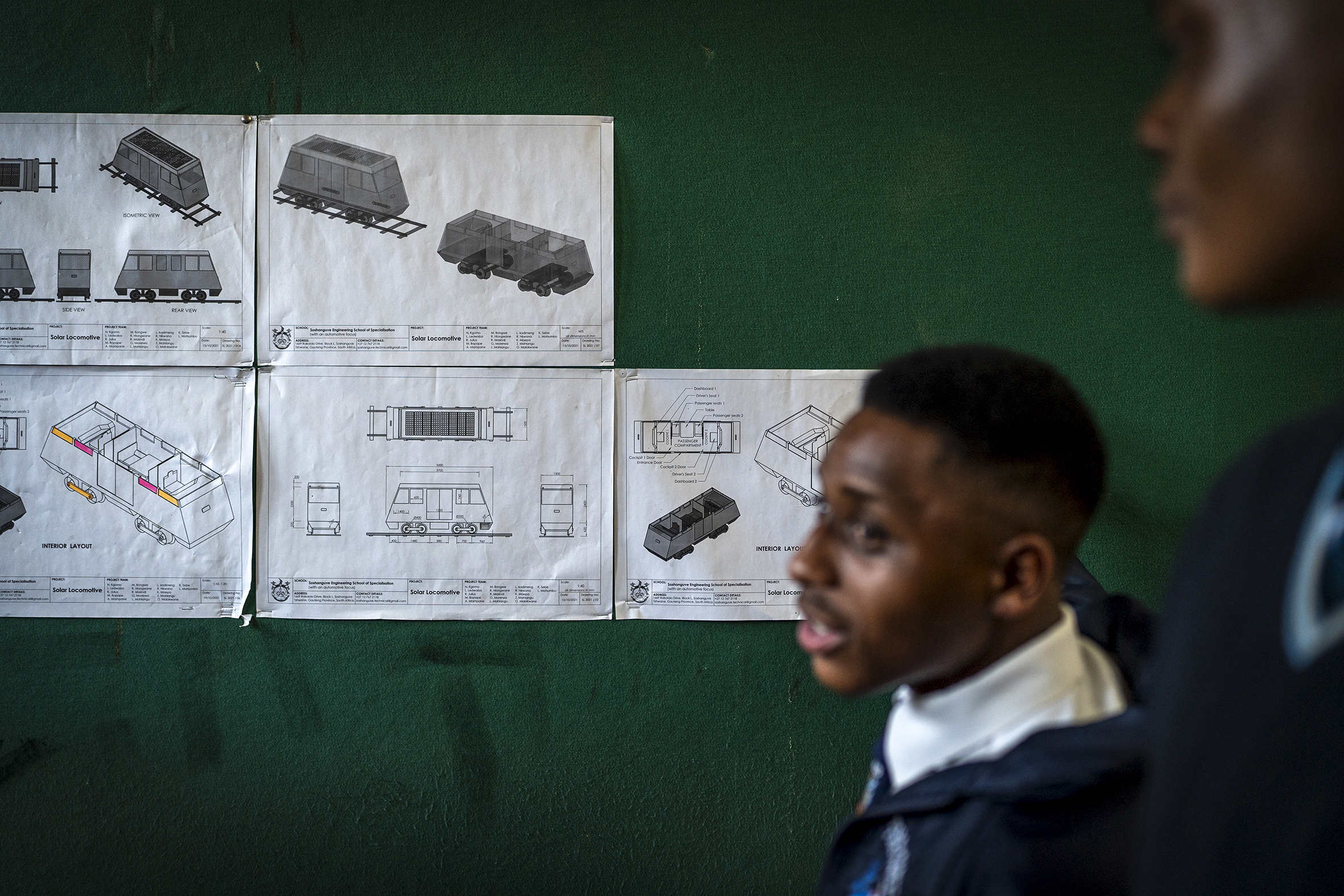
Thabang Khoza (right) and Ronnie Masindi stand beside the train’s design plan. Hundreds of hours of research was put into their project. (Photo: Shiraaz Mohamed)
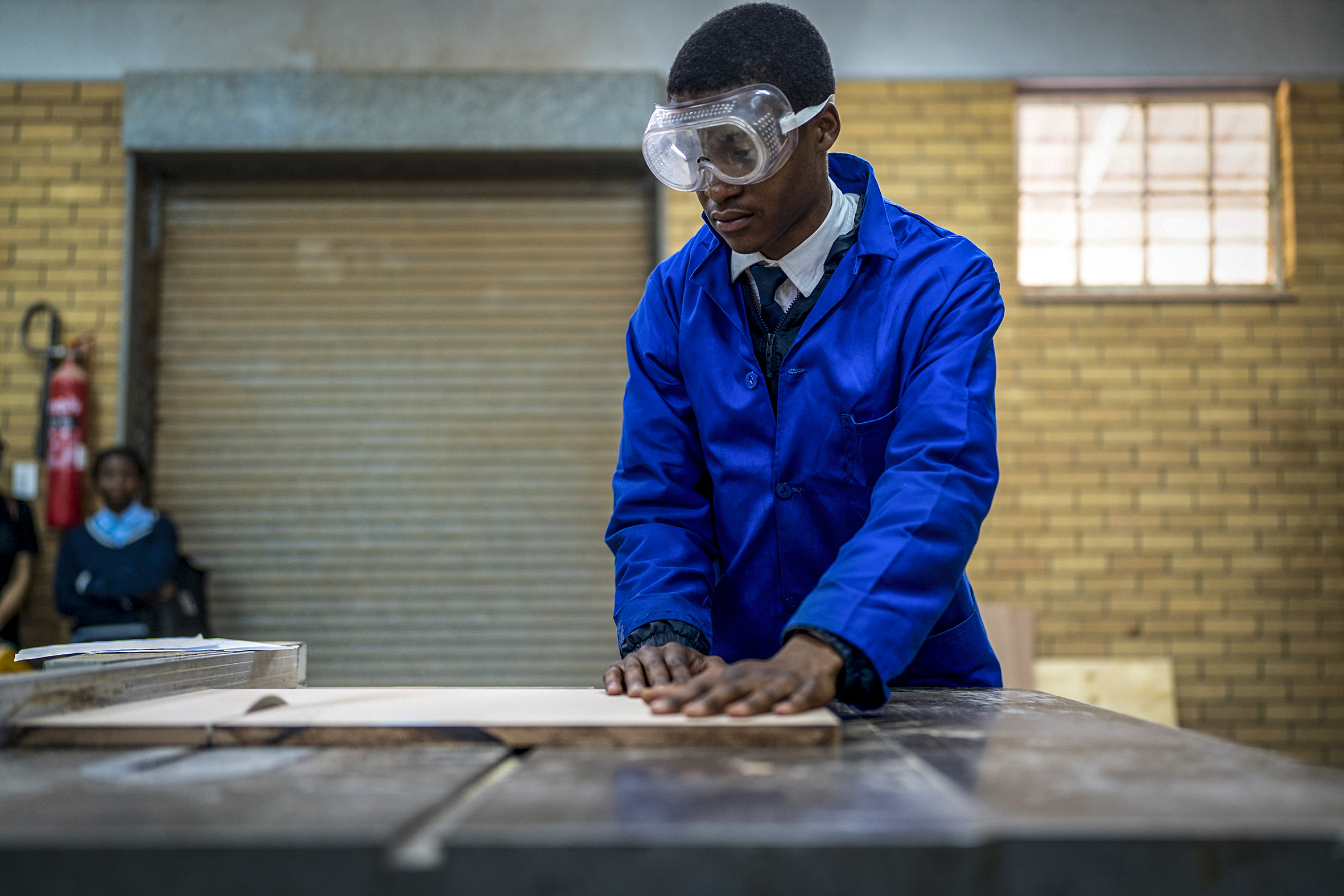
Grade 11 pupil Bongwe Mpho demonstrates how he cuts a piece of wood, used for the interior of the train. (Photo: Shiraaz Mohamed)
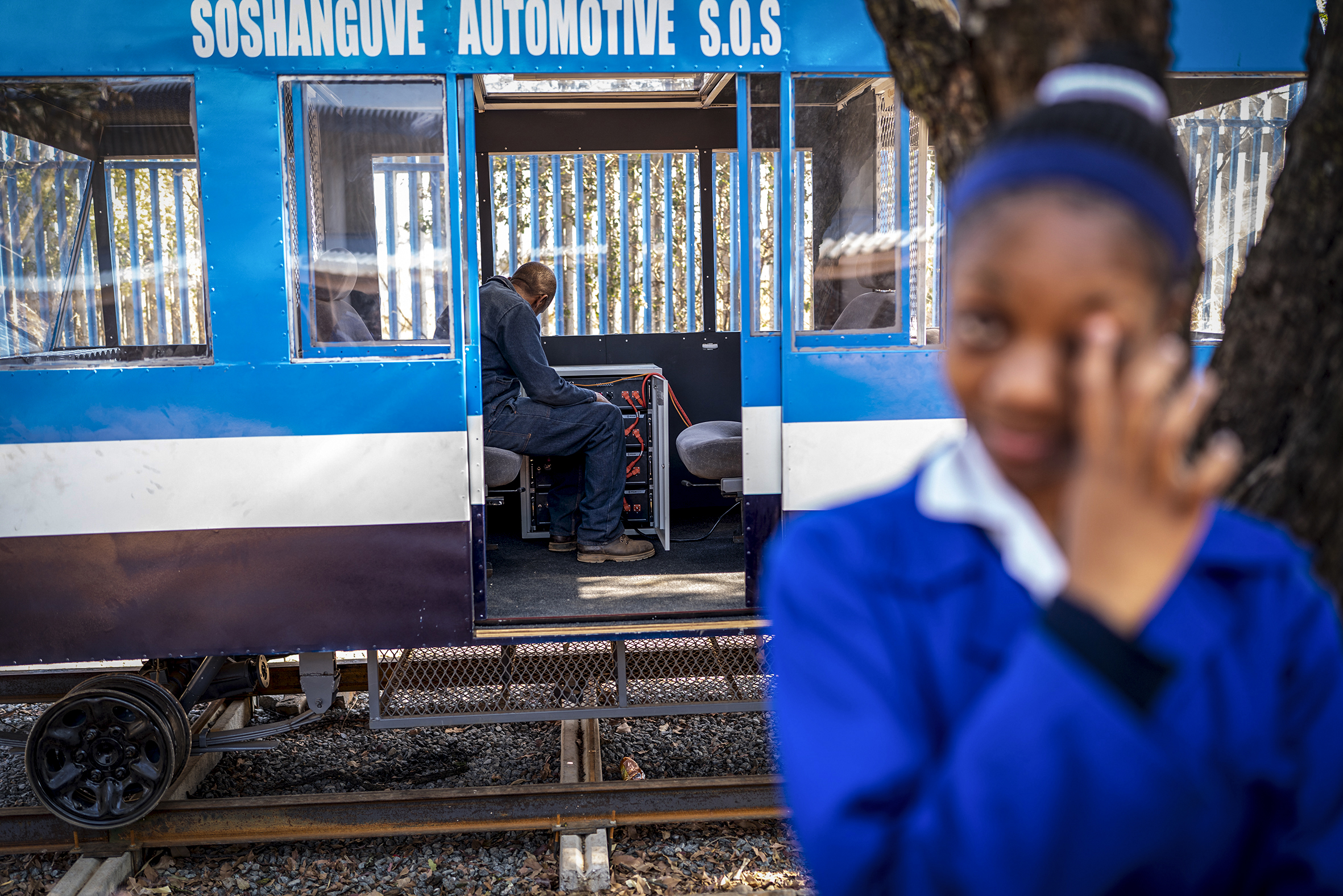
Mentor, teacher and father-like figure to the students Kgomotso Maimane (inside train) removes the lithium batteries in order to prevent theft. (Photo: Shiraaz Mohamed)
The building process began during the December 2021 holidays and the group gave up their Christmas Day and New Year’s celebrations to make sure they completed their project in time.
Mechanical welding technology learners were responsible for attaching galvanised steel sheets to the body of the train. Then they prepared a chassis with two axles, which were connected to the motor.
Another four weeks were spent on painting to add colour to the train before civil technology learners built a few metres of railroad track behind the school building. The learners are working on lengthening the track to test the full capabilities of the train.
Tladi said: “I was not sure whether it would get to this stage because we have been discouraged by so many people who said that this was not going to happen. But the kids kept focus and they moved on until their mission was accomplished. I believe these kids are the key drivers of this dispensation that we’re living in. Once they are given the space, I’m telling you, they’re amazing. They can make wonders.”
Three of the group’s Grade 12 learners have applied for scholarships while another, Lethabo Nkadimeng, said he had already received offers to study civil engineering at the University of Cape Town and computer science at Stellenbosch University.
“I’m really proud of these kids,” Tladi said. “And I’m wishing them all the best. I [hope] somebody will identify and take them further because they are future engineers.” DM

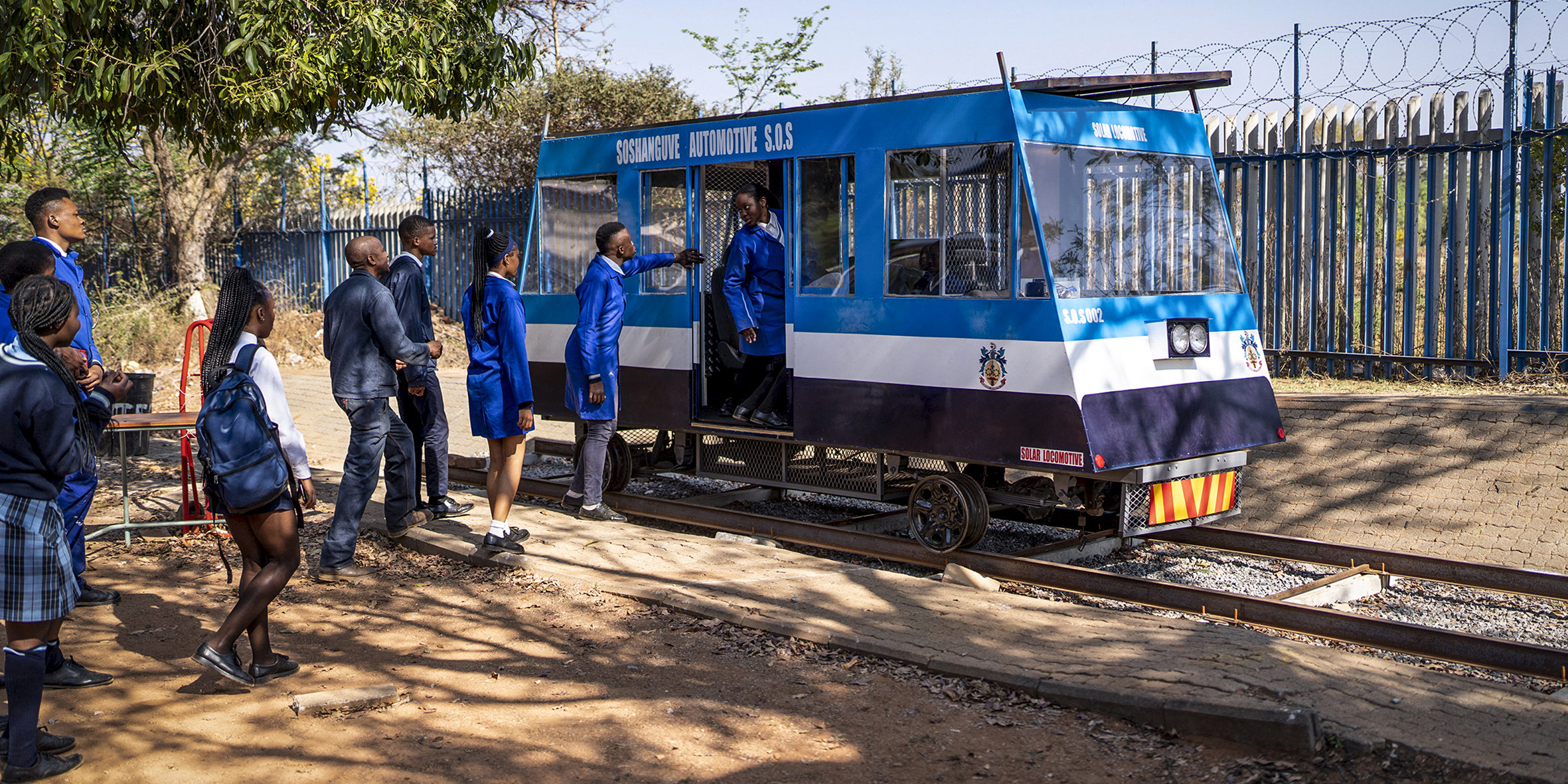
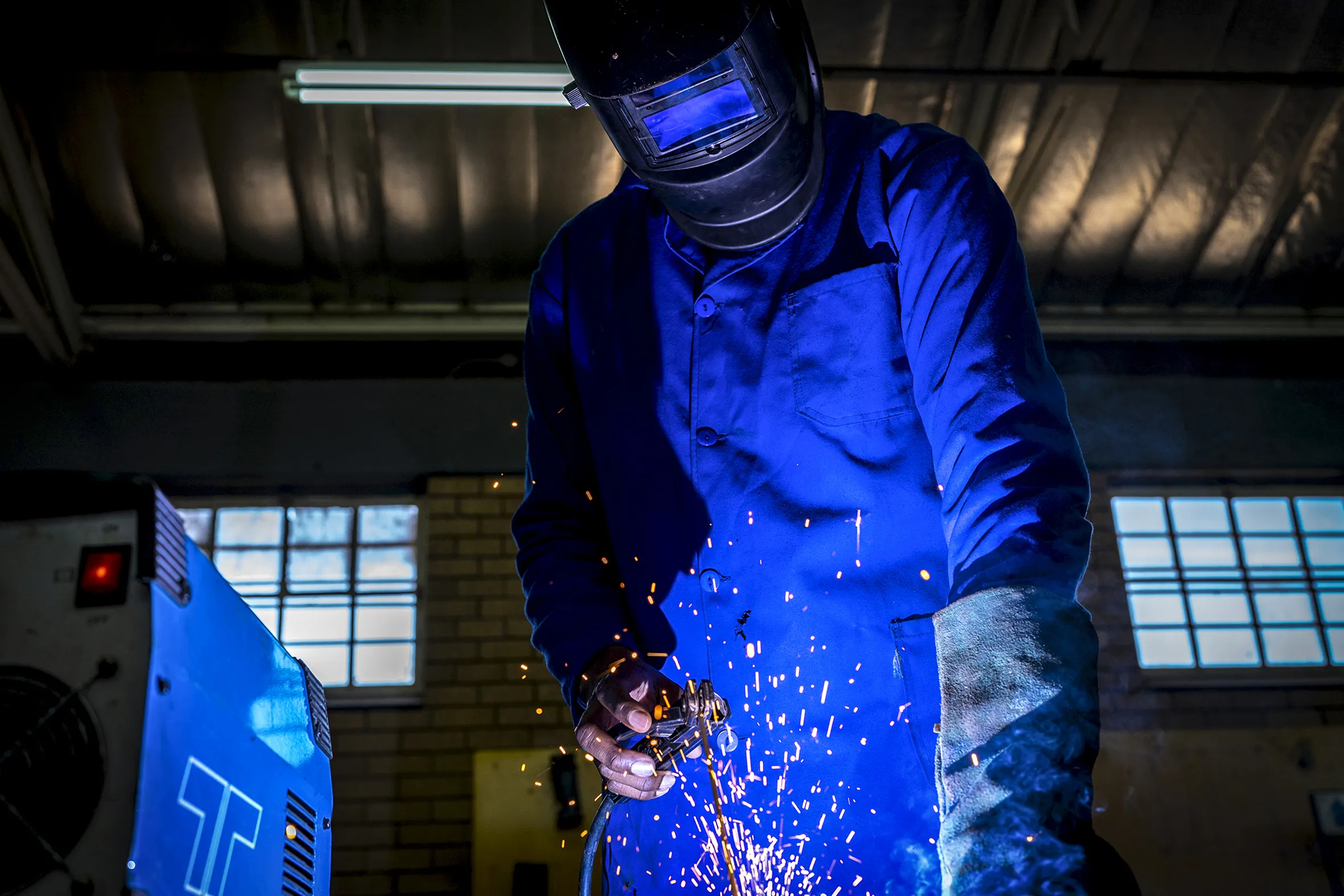
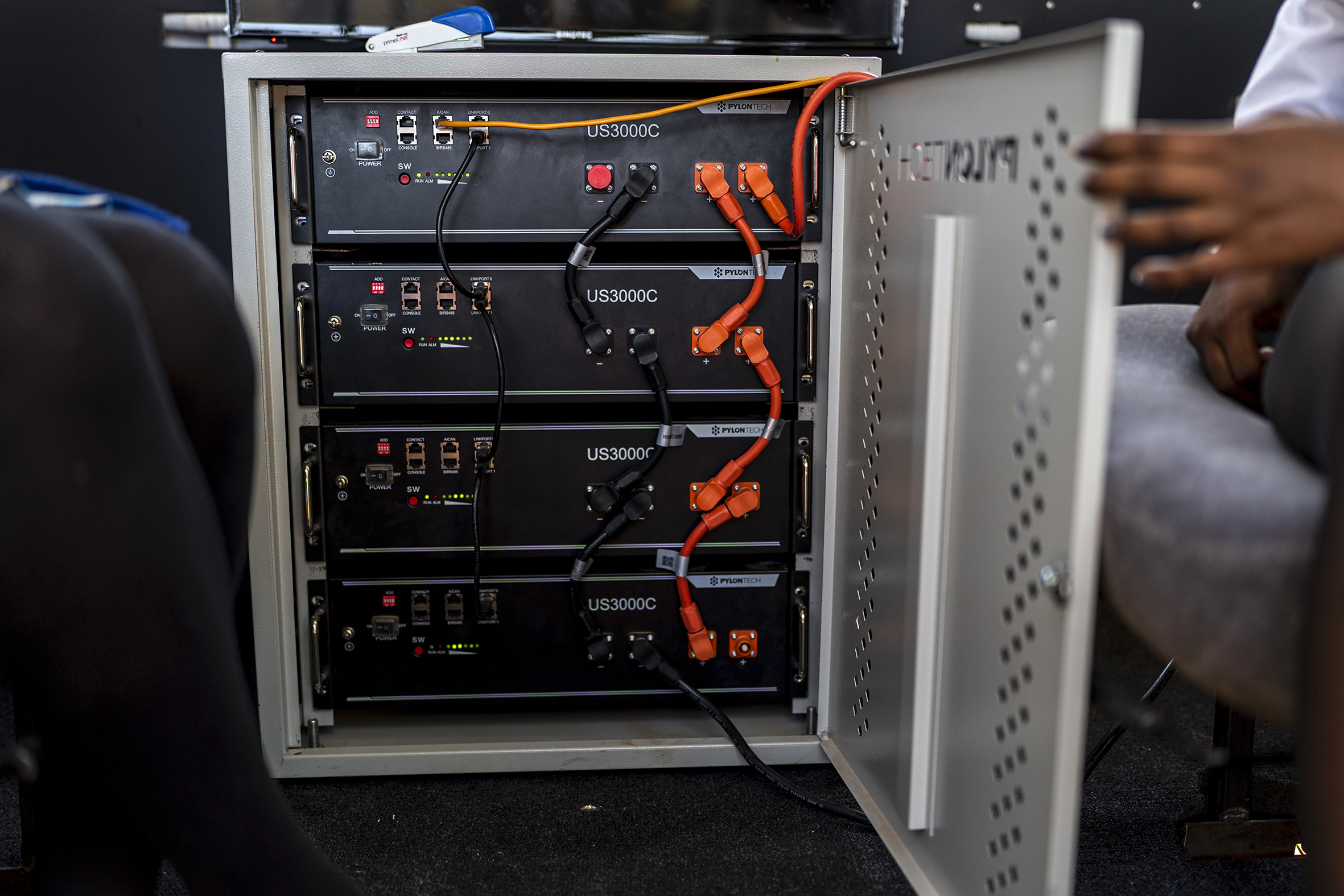










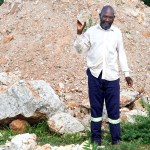









What happens when the solar panels are stolen?
Nothing, because it won’t make any difference. By then the Lithium batteries would have been stolen already.
Wow, what an awesome achievement !!! Well done Soshanguve Technical High. Ingenuity and hard work are the keys to success.
This amazing, well done to the pupils and their teacher. We have such amazing people in our wonderful country who given the right guidance and education can achieve anything.
An excellent educational exercise. Would be even better if tracks could lead to a useful destination!